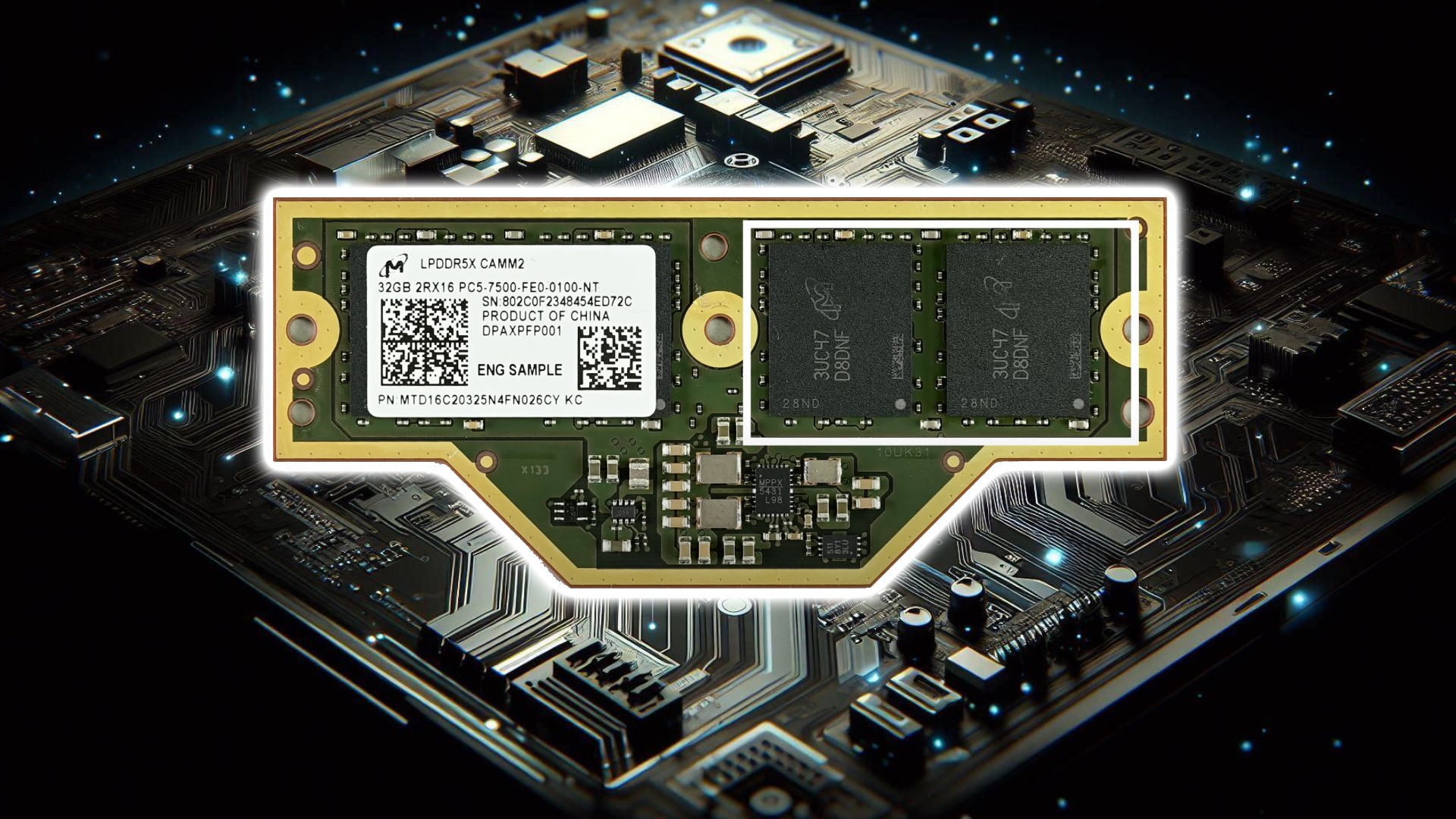
Remember when you maxed out your laptop's RAM, knowing you might need more later? Yeah, me too. It's a gamble on the future, and frankly, the odds haven't been great. I’m here to tell you, fear not, my fellow tech enthusiasts, because a game-changer has arrived, LPCAMM2.
Imagine a world where your laptop's memory isn't soldered on — a relic of the past that makes self-repair nigh impossible. Now imagine being able to pop in more RAM whenever you need it, just like you could with older desktops. Welcome to the future, courtesy of Micron and its LPCAMM2, a "disruptive next-generation laptop memory form factor."
LPCAMM2, or low-power compression attached memory modules, can enable AI PC performance, a Micron leader declared in the company's announcement on Tuesday:
"With LPCAMM2, we are delivering a future-proof memory solution, enabling faster speeds and longer battery life to support demanding creative and AI workloads," said Jonathan Weech, senior director of product marketing for Micron’s Commercial Products Group.
This new tech combines the best of both worlds, with the efficiency and speed of LPDDR memory (think longer battery life) with the modularity and upgradeability of traditional DIMM sticks.
It's like a tiny, replaceable powerhouse that screws right into your laptop. Plus, it takes up way less space and runs cooler than its soldered-on counterparts.
So, how did we get here?
Actually, the credit goes to a bunch of tech heroes.
First, there was Dell, which pioneered the concept with CAMM. Recognizing its potential, the company didn't keep it locked away; it opened it up for everyone to use.
Next came Micron and Lenovo, the first to bring LPCAMM2 to market, with a whole squad of other companies backing them up. This industry-wide collaboration is what makes this whole thing so exciting.
It means a future where you can buy an LPCAMM2 module and know it'll work in any laptop that uses the tech, regardless of the brand.
Why is this such a big deal?
It's a win-win for everyone. Consumers get the flexibility to upgrade their laptops, extending their lifespan and reducing e-waste, and businesses can keep their workstations running smoothly for longer.
Repair shops can actually fix memory issues instead of replacing entire machines. This is a more sustainable, repairable future, and we can all support it.
The First LPCAMM2 Laptop is Here
The first laptop to boast this revolutionary memory is the Lenovo ThinkPad P1 Gen 7. It can be configured with up to 64GB of LPDDR5x LPCAMM2, offering significant power savings and a smaller footprint compared to traditional RAM.
This powerhouse is packed with other impressive specs as well, making it a serious contender for creative professionals and gamers alike.
What's next?
With major players like Lenovo and Micron on board, the future of LPCAMM2 looks bright. We're expecting to see more and more laptops adopt this technology, giving consumers the control and flexibility they deserve.
This isn't just a new memory standard – it's a step towards a more sustainable and repairable future for laptops. And that's something worth celebrating.
The Future is Bright: Early Adopter and What to Expect
Micron and Lenovo are the first to market with LPCAMM2, with the Lenovo ThinkPad P1 Gen 7 workstation laptop. This powerhouse can be configured with up to 64GB of LPDDR5x LPCAMM2 memory, offering significant power savings and a smaller footprint than traditional RAM.
With other big names like Samsung and ADATA supporting the standard, LPCAMM2 can potentially become the new norm. This means a future where laptops are built to last, with repairs and upgrades readily available.
The potential for this technology to make a real difference in sustainability and user experience is undeniable.
Stay tuned
We'll be closely monitoring the rollout of LPCAMM2 and its performance in real-world use. This could be a landmark moment for the laptop industry, ushering in an era of user-centric design and responsible tech.
Also, Apple continues to fail in two areas: Repairability and the cost of its memory options. You can't upgrade a MacBook after purchase, and adding more RAM at purchase is a budget killer.
At the end of the day, PCs are offering constantly improving options to users, and that is something to keep in mind.







